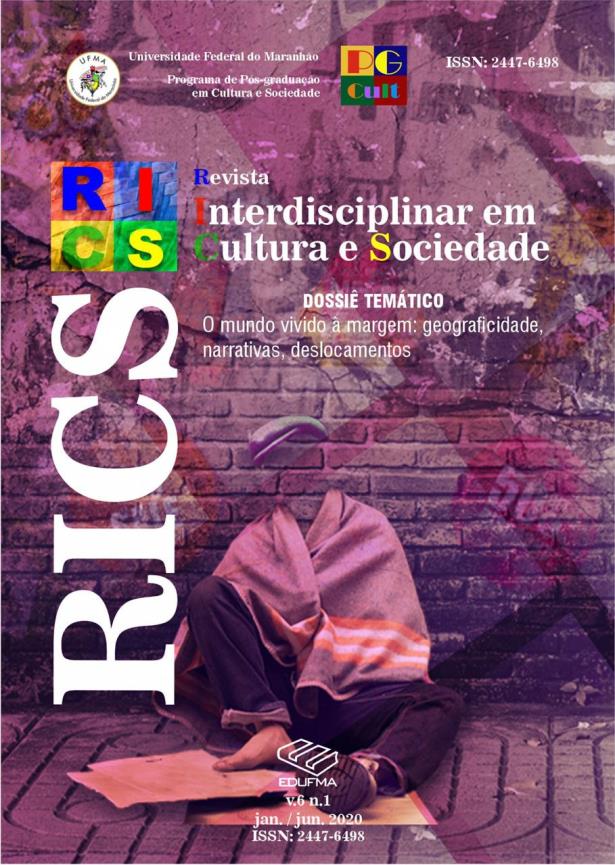A Vida nos Musseques: a Geograficidade em “Vavó Xíxi e seu Neto Zeca Santos”
DOI:
https://doi.org/10.18764/2447-6498.v6n1p36-44Palavras-chave:
Literatura. Geograficidade. “Vavó Xíxi e seu neto Zeca Santos”.Resumo
Publicado em 1963, o livro Luuanda, de José Luandino Vieira apresenta três contos marcados pela oralidade do povo angolano. A obra tem o intuito de dar representatividade aos musseques, áreas periféricas onde se abrigam pessoas deslocadas da urbe, além de dar voz a esses indivíduos que vivem à margem. O conto traz como protagonistas duas personagens com vida relegada à miséria, um jovem sem perspectiva de vida e sua avó representando a força materna. Luandino tinha por intenção mostrar as fronteiras geográficas não somente físicas, mas também culturais entre dois polos distintos em Angola: o espaço do colonizador e do colonizado. É uma obra nacionalista e de cunho crítico-social, com os olhos voltados para aqueles que resistem às injustiças de uma comunidade marcada pela colonização. Com isso, busca-se fazer uma análise crítico-interpretativa do conto “Vavó Xíxi e seu neto Zeca Santos” pelo viés da Geografia Humanista Cultural que estuda o ser-estar-no-mundo, de modo a constatar a percepção da paisagem através de elementos simbólicos. Com base na liberdade da literatura em elucidar vários aspectos do ser humano, tanto particular como social, a literatura se propõe a dialogar com a geografia. Nesta análise, a geografia ratifica o seu discurso quando da influência do meio no psicológico do homem, ou seja, a sua relação com a Terra. Portanto, o conto de Luandino Vieira é um importante instrumento de identificação cultural como símbolo de resistência que referencia a vida nos musseques - espaço de interação de pessoas invisíveis.
Palavras-chave: Literatura. Geograficidade. “Vavó Xíxi e seu neto Zeca Santos”.
Life in the Musseques: Geograficity in “Vavó Xíxi and her grandchild Zeca Santos”
ABSTRACT
Published in 1963, the book Luuanda, by José Luandino Vieira presents three tales marked by the orality of the Angolan people. The work aims to give representation to the musseques, peripheral areas where displaced persons of the city are housed, and to give voice to those individuals who live on the margin. The story brings as protagonists two characters who have a life relegated to misery, a young man without perspective of life and his grandmother representing the maternal strength. Luandino had the intention to show geographical frontier not only physical, but also cultural between two distinct poles in Angola, the space of the colonizer and the colonized. It is a nationalistic and critical-social work so that the eyes are turned to those who resist the injustices of a colonized community. With this, it seeks to make a critical-interpretative analysis of the tale “Vavó xíxi and her grandchild Zeca Santos” by the bias of the Cultural Humanist Geography that studies being-and-being in the world and verify the perception of the landscape through symbolic elements. For it is on the basis of the freedom of literature to elucidate various aspects of the human being, both private and social, that literature dialogues with geography. In this analysis, geography ratifies his discourse in the influence of the environment on the psychological of man, that is, his relationship with the Earth. Therefore, the tale of Luandino Vieira is an important instrument of cultural identification as a symbol of resistance that references life in the musseques - space of interaction of invisible people.
Keywords: Literature. Geograficity. “Vavó xíxi and her grandchild Zeca Santos”.
Downloads
Downloads
Publicado
Como Citar
Edição
Seção
Licença

Este trabalho está licenciado com uma Licença Creative Commons Atribuição 4.0 Internacional.


















